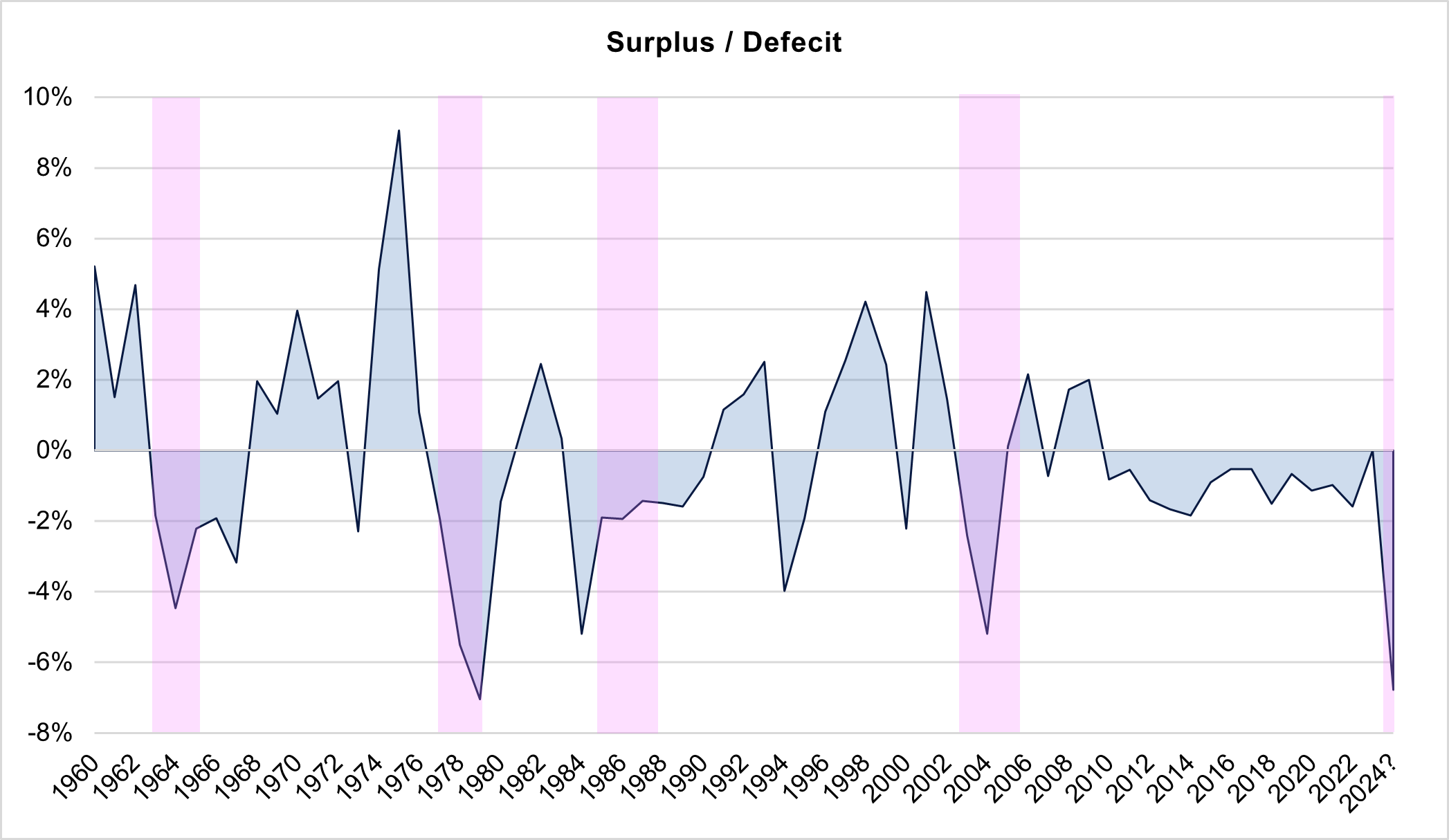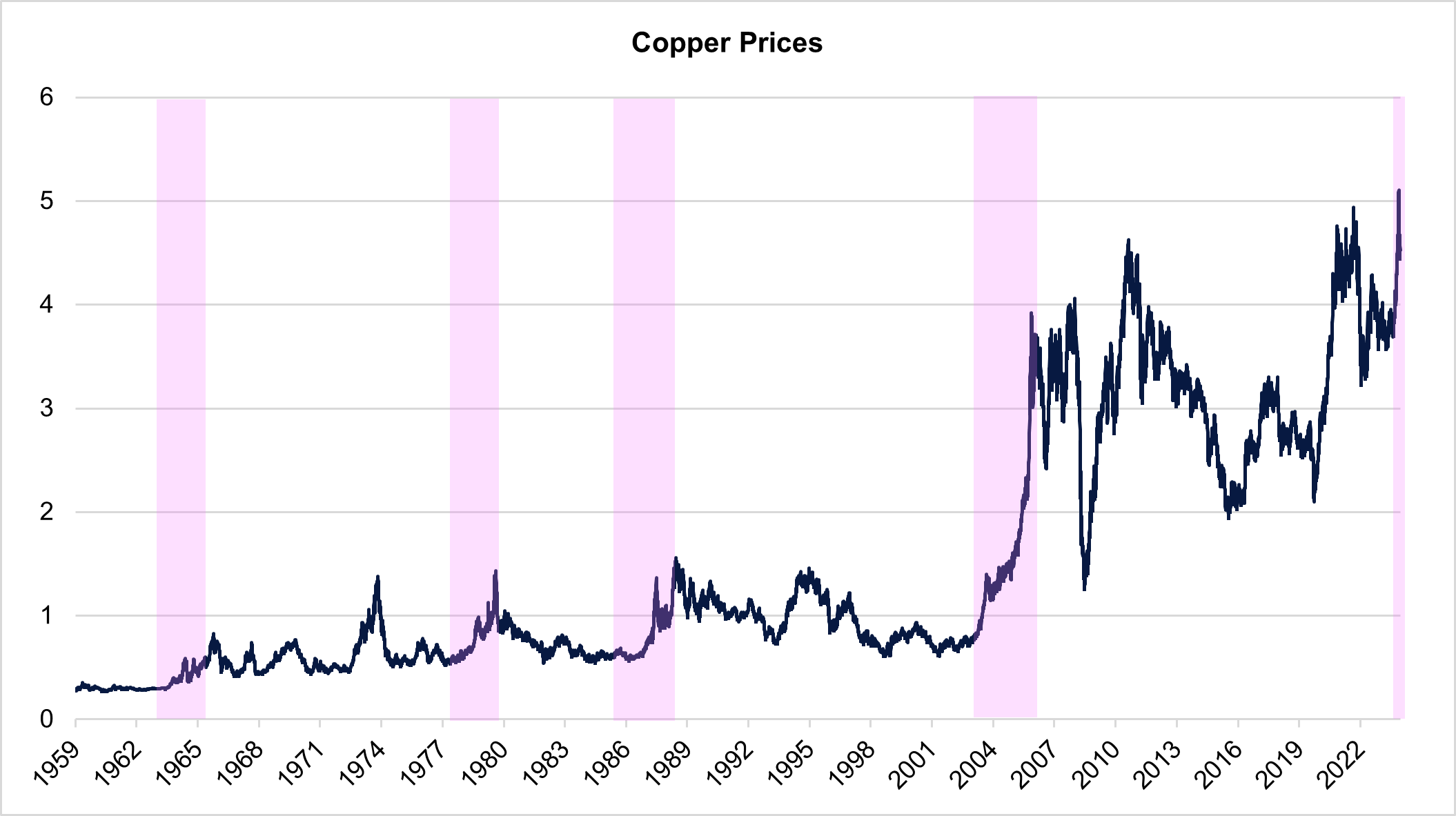Copper in crisis: Balancing supply shortfalls with explosive demand growth
In our previous wire, we described how the demand for electricity and grid infrastructure is set to grow quickly due to AI. In this note, we take a deeper look at how this impacts copper and the future supply and demand dynamics for the commodity.
Copper is a highly conductive metal, allowing for the flow of electricity and heat. It is typically used for electrical conductivity in the grid as well as appliances and housing. China uses about half of the world’s copper. Chile mines around one-quarter of the world’s copper, with Peru and the Democratic Republic of Congo (Congo) adding about 13% each. Copper tends to be used within equipment (32%), building and construction (26%), infrastructure (17%), transport (13%) and industrial (12%).
The following table summarises our estimate of the supply-demand balance for copper in the coming 12 months. Following this we provide more detail of our rationale for this outlook.
![Sources: Company reports, own estimates, country geological services[1] Global supply is currently ~25 million tonnes p.a.](https://www.livewiremarkets.com/rails/active_storage/blobs/proxy/eyJfcmFpbHMiOnsibWVzc2FnZSI6IkJBaHBBOE40Q3c9PSIsImV4cCI6bnVsbCwicHVyIjoiYmxvYl9pZCJ9fQ==--8c8b4e2a8e875ebe250380f6192e1652589fa742/Picture2.jpg)
Sources: Company reports, own estimates, country geological services
[1] Global supply is currently ~25 million tonnes p.a.
If our forecast is roughly right, then a deficit of around 8% will be one of the largest on record. The following table provides a representation of historic supply demand balances throughout history.

Source: International Copper Study Group
Each time throughout history that we’ve had at least a 4.5% deficit in copper (as the pink highlighted sections above indicate), the price of copper has subsequently at least doubled to tripled.

In the rest of this note, we provide further details underlying our forecast.
Supply Side
The supply side of copper is challenged. In 2024, there are many factors that we believe will result in a reduced amount of copper production relative to 2023, including:
- In Panama, the Cobre Panama mine run by Canadian miner First Quantum has been taken away by the government. It is the 10th largest copper mine in the world, accounting for around 1.5% of global supply.
- In the Congo and Zambia, hot weather has caused blackouts that have led to temporary mine closures. Heavy rain during the wet season has also interrupted mining. As a result, the ability to expand capacity was halted. This impacted Ivanhoe in particular. The largest Chinese copper mining companies in Africa have completed much of their brownfield production increases in 2024. It took Ivanhoe around 2 years to increase the capacity of their Kamoa-Kakula project by 0.2mT (or around 0.8% of world supply).
- Production out of Latin America is suffering from falling production grades. This is evident in the declining amount of copper being produced by Codelco, Grupo Mexico and Glencore.
Conservatively factoring in the Ivanhoe increase in production, we believe overall supply is set to remain stagnant due to declining ore grades in Latin America and the delays in completion of expansion projects in the Congo.
It’s important to note that the supply of copper takes time to bring online. Brownfield supply takes a couple of years to complete and greenfield supply takes around 15 years from exploration to production.
Copper inventories, mainly held by mining companies, are cycling lower. If the supply deficit ends up being close to where we think it will, then inventories will get drawn down quickly.
Demand Side
The demand side of copper is being impacted by the following:
- Data centre ramp up in 2024 is driving a significant rise in copper demand. According to Schneider Electric, a 1GW data centre of the CPU variety requires around 65,000 tonnes of copper. The GPU variety of data centre requires far more electricity to run the cooling and compute required. Additionally, as of a few months ago, NVIDIA is beginning to move from optical interconnections between servers to copper interconnects. This improves energy efficiency by about 100% and allows larger clusters of GPUs to access shared memory. A 1GW GPU data centre may require around 90,000 tonnes of copper. It’s estimated that in the next 12 months, around 12GW of data centre capacity will be added in the world. This alone, will add around 1 million tonnes (mT) of demand for copper, or around 4% of world supply.
- As we outlined in our previous note, the data centres being constructed need to be powered by clean electricity. Generating around 2MW of energy from wind or solar sources requires around 4 tonnes of copper. We estimate that this may add around 0.1mT of demand for copper.
- If the demand for increased copper production increases by around half of the pace in recent years, then EVs will require another 0.5mT of copper.
- Fuelled by Prime Minister Modi’s nationalism, India is undergoing extremely fast economic growth. India is expected to add around 0.25mT to copper demand in 2024.
- While infrastructure investment remains elevated, residential construction activity across much of the developed world is starting to bottom out. In the US, housing starts are beginning to rise again. In China, the authorities’ measures to relax home-buying restrictions across the country is starting to stabilise construction activity. Even in Germany, we’re starting to see green shoots of a pick-up in electricity demand.
- We’re starting to see the bottoming out of the decline in demand for electronics across various macro metrics (whether it be LCD screen manufacturers or demand for memory semiconductors for instance).
- Finally, the Chinese government has rolled out a subsidy for trading in old appliances for new ones, as well as a subsidy for buying a new EV.
Final Thoughts
Copper demand typically picks up the most in the first year out of a recession or economic downturn, or in the last years. As we review the evidence, we believe we’re starting to see economic pick-ups in Europe and China as well as an acceleration in activity in the US.
When we combine these factors together, we believe we could see a historic imbalance between the supply and demand for copper. This imbalance is driven by a lack of brownfield expansions, temporary disruptions to mining activity and significantly increased demand from new data centres with copper interconnects. As a result, we believe an investment into copper at current prices, whether it be through physical purchases or copper mining stocks, represents an attractive one.
5 topics

